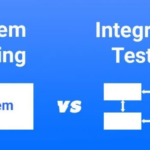Amidst the ever-evolving landscape of workplace safety, a powerful ally has emerged in the form of a safety management app. This article will delve into the pivotal role of this innovative technology in fostering a safety culture within organisations. From incident reporting to proactive risk assessment, the multifaceted functionalities of safety management software are transforming safety practices across industries.
The comprehensive capabilities of safety management software offer organisations an arsenal of tools to bolster their commitment to employee well-being. By seamlessly integrating incident reporting, risk evaluation, real-time communication, and compliance tracking, this software empowers organisations to elevate safety protocols to new heights. Through the lens of various features, this article will shed light on how the safety management app acts as a dynamic catalyst for nurturing a culture of safety.
Centralised Incident Reporting and Tracking
A foundational aspect of robust safety management software is its centralised incident reporting and tracking system. This feature offers a streamlined platform for reporting accidents, near-misses, and potential hazards. By centralising this process, the software ensures that no incident goes unnoticed or unrecorded. It enables real-time documentation, attaching relevant details and documents for future reference. This feature fosters accountability among employees and management, contributing to a transparency and continuous improvement culture. Additionally, the software allows for trend analysis, enabling organisations to identify patterns and take proactive measures to prevent recurring incidents.
Customisable Safety Checklists
The versatility of safety management software lies in its customisable safety checklists. These checklists can be tailored to suit the specific needs of various industries and operational environments. Whether an organisation operates in construction, manufacturing, healthcare, or any other sector, these customisable checklists can be modified to reflect the unique safety requirements of each context. This customisation ensures that safety protocols are relevant and aligned with the intricacies of the organisation’s daily operations. By enabling the creation of checklists that address the specific hazards and risks associated with different tasks, the software enhances employee engagement and adherence to safety measures.
Real-time Notifications and Alerts
Timely communication is paramount in ensuring workplace safety. Advanced safety management software incorporates real-time notifications and alerts. When an emergency or critical incident occurs, the software sends notifications to relevant stakeholders through multiple channels, including email, SMS, and push notifications. This feature ensures that key personnel are informed immediately, allowing them to take swift and appropriate action. Real-time alerts are essential for managing emergencies and disseminating important safety updates, such as changes in safety protocols or regulatory requirements.
Comprehensive Data Analytics
Data-driven decision-making is a hallmark of effective safety management. The software’s comprehensive data analytics feature provides organisations with valuable insights into safety trends, incidents, and areas for improvement. Organisations can identify patterns, pinpoint potential weaknesses, and proactively address safety concerns by analysing the collected data. This analytical approach allows informed decision-making when allocating resources for safety initiatives and training programs. Furthermore, data analytics contribute to developing targeted strategies that enhance overall safety awareness and prevention.
Training and Certification Tracking
Employee training and certifications are pivotal in maintaining a safe work environment. Safety management software simplifies the process of tracking employee training sessions and certifications. It provides a centralised repository for storing training records and certification documents, ensuring that all relevant information is readily accessible. This feature aids organisations in ensuring that employees are up-to-date with the latest safety protocols and training requirements. By facilitating efficient tracking of training progress and certification status, the software promotes a culture of competence and preparedness among employees.
Document Management and Compliance
Regulatory compliance is essential for ensuring workplace safety. Effective safety management software includes robust document management capabilities. It allows organisations to easily store, organise, and retrieve essential safety documents. This feature proves invaluable during audits and regulatory inspections, as all relevant documents are readily available for review. Whether it’s safety manuals, compliance reports, or incident documentation, having a centralised repository ensures that organisations remain compliant with industry regulations and standards.
Risk Assessment and Mitigation
Proactive risk assessment is a cornerstone of effective safety management. The software facilitates systematic risk assessments to identify potential hazards and vulnerabilities within an organisation. Organisations can prioritise mitigation efforts by categorising risks based on severity and likelihood. This approach enables targeted interventions to address high-priority risks and prevent accidents before they occur. Through continuous risk assessment and mitigation, organisations can create a safer work environment that minimises potential threats to employees and assets.
Mobile Compatibility for On-the-Go Safety
The modern work landscape often requires employees and supervisors to be mobile. Effective safety management software offers mobile compatibility, ensuring safety protocols are accessible anytime, anywhere. Employees can access incident reporting, safety checklists, and other safety-related information through their smartphones or tablets. This feature empowers employees to prioritise safety even when they are on the move, fostering a culture of vigilance and responsibility.
Integration with IoT and Wearables
Integrating safety management software with IoT devices and wearables is a groundbreaking development. Wearable devices, like smart helmets, vests, and sensors, contribute to real-time data collection and monitoring. These devices track factors like temperature, air quality, and equipment status, providing valuable insights into potential safety risks. By integrating these devices with the software, organisations can respond promptly to abnormal conditions and prevent accidents. This integration not only enhances safety but also demonstrates a commitment to leveraging technology for the well-being of employees.
Conclusion: Safety management software has ushered in a new era of proactive and streamlined safety practices in workplace safety. Using technology, organisations can surpass conventional safety paradigms and pave the way for a future where safety is not simply a protocol but a fundamental core value. From customised reporting to mobile integration, the array of features offered by safety management apps presents a holistic approach to safety. Embracing these features allows organisations to create a unified safety culture, where each member is equipped with the tools to contribute to a secure and harmonious work environment actively. As organisations continue to embrace innovation, the safety management app stands as a beacon of progress, guiding the way towards a safer and more resilient future.







